Shooting on campuses are on the rise — Is Sacramento State prepared?
October 25, 2017
(Go to StateHornet.com/Guns for more related stories)
Were there to be an active shooter on a campus of over 30,000 students, with thousands of faculty, staff and administrators as well, Sacramento State would be at the same mercy that any college campus might be or has been.
That is to say, no mercy at all if the active shooter plans to do what was done at Virginia Tech in 2007 (33 dead, 23 injured) or the University of Texas as early as 1966 (17 dead, 31 injured).
In fact, shootings on college campuses are almost entirely on the rise since the Virginia Tech massacre, according to a study published by the Citizens Crime Commision of New York City.
Sac State and the California State University system are actively pursuing methods of prevention and reaction that could save lives if implemented, including training on responding to active shooter situations, campus notification systems and building security measures.
Sac State Chief of Police Mark Iwasa said he would like to see improvements made to all three facets.
RELATED: EDITORIAL: CSU should mandate active shooter training
Alert systems need to be better
The first key to responding to an active shooter emergency is to know as much information as possible, and Iwasa said a recent test of the campus notification system “went badly.”
“Ideally, you’re trying to get notifications to people in 5 minutes or less,” Iwasa said.
Of around 38,000 Sac State community members who received the test notifications, “very few” were on time. Most instead took 10-15 minutes, which Iwasa said can be typical of large-scale notification systems.
RELATED: #SacStateSays: How do you feel about guns?
Iwasa said he and others involved are now focused on finding reasons for the delay, though he noted that the test itself was made more complex than an actual emergency notification because it was designed to “test our capabilities.” In a real emergency, Iwasa said he is “fairly certain it would go faster.”
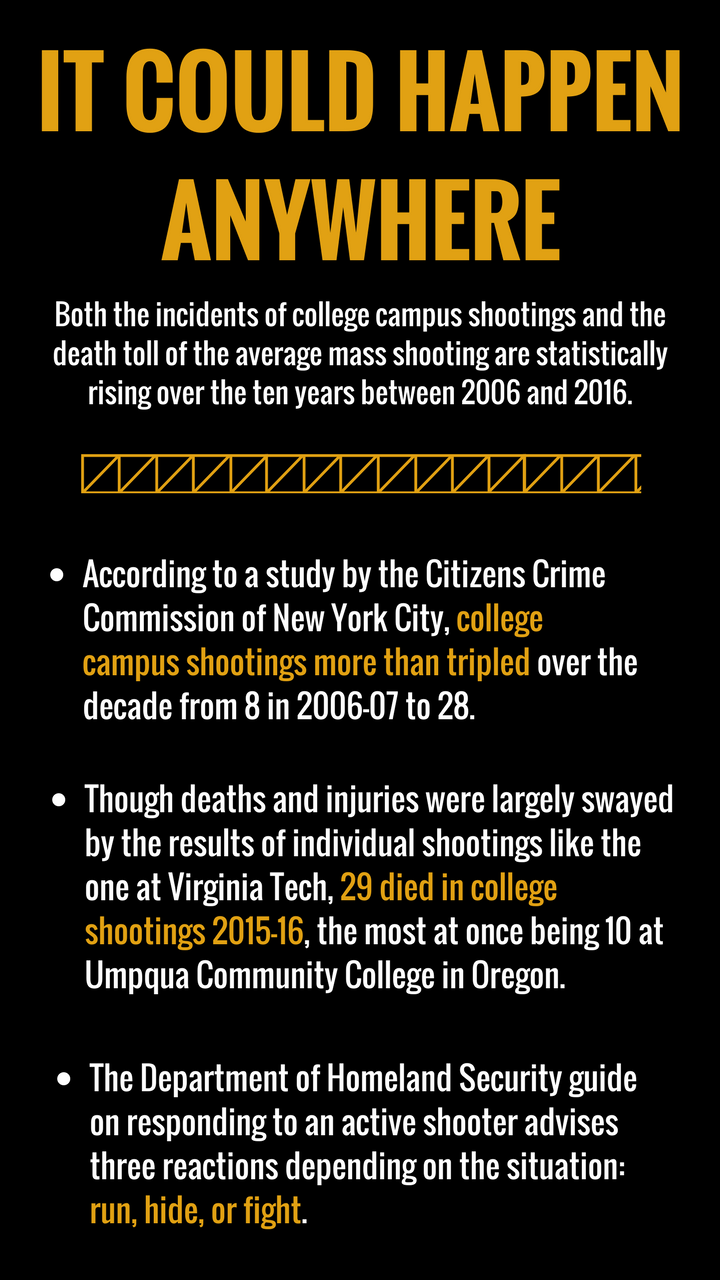
Training could be implemented
It’s also true, however, according to the Department of Homeland Security, that most active shooter scenarios last only 10-15 minutes anyway, often faster than police can respond. As a result, students and employees knowing what to do in response could be vital on a large campus like Sac State.
Though the University (and all CSU’s) offers annual active shooter training sessions open to all, and the same training can be offered upon request, Iwasa said the training is rather simple and could be more impactful if offered in an accessible video that would be “short and sweet.”
“It’s reasonable to believe it may become part of student orientation,” Iwasa said, noting that it would be “probably more important for some in leadership,” like the designated building coordinators for each building on campus that are trained in how to handle an emergency.
However, with up to hundreds of combined students and workers in any given building throughout the day, Iwasa said it would be helpful if other leaders could be trained as well.
That’s because, per the DHS, having someone in charge giving clear instructions during an emergency on what to do can dramatically increase the likelihood of survival for a group, which on a college campus could be a small club meeting or lecture class.
The CSU system said it is currently is working on such a training video but did not have a projected time it could be implemented. Elizabeth Chapin, manager of CSU’s public affairs, said decisions in regards to whether or not safety training is mandatory or not are made on a campus level.
Niesha Fritz, a communication specialist with the California Faculty Association, which represents faculty members within the CSU, would not take a position on the possibility of mandatory active shooter training as of now because it is not covered in the collective bargaining agreement between the CSU and CFA.
All buildings need to be lockable in a pinch
Though the first thing one should do is run if they can confirm the shooter is not near them, the second option is to bunker down and hide. This would be made much easier for students and employees on campus if building entrances were automatically lockable.
Iwasa and other campus police and janitorial workers remember having to manually lock and unlock the entrances of all buildings on campus.
Currently, a campus initiative commissioned by Sac State President Robert Nelsen’s office is modifying door locks so most buildings can be locked automatically with all buildings being made so in “the next four months or so,” according to Iwasa.


















































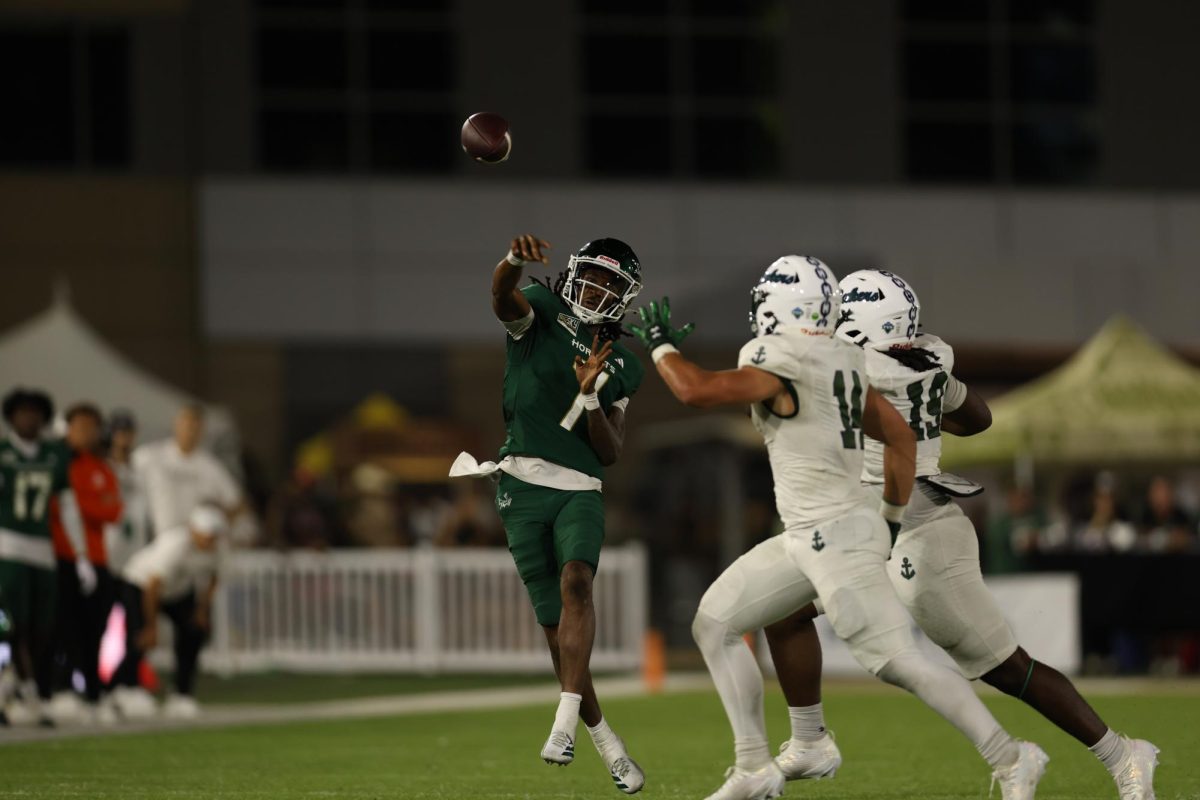




























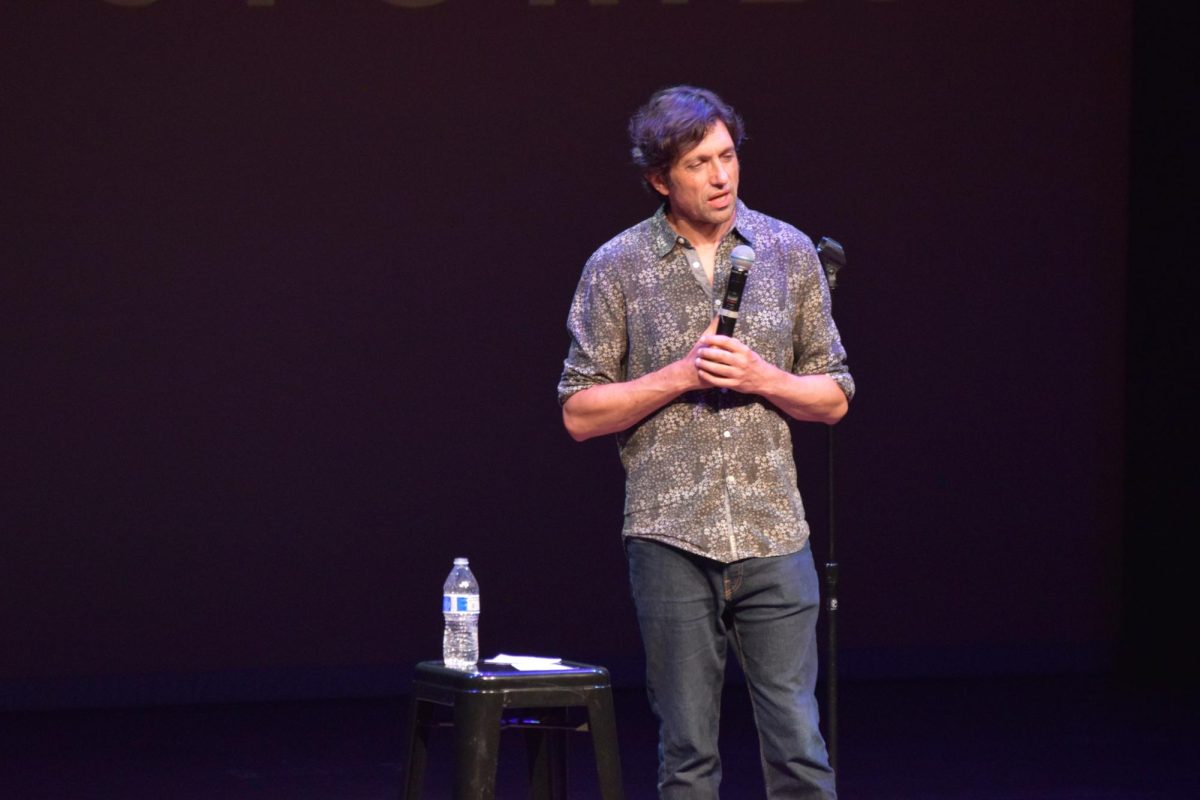






































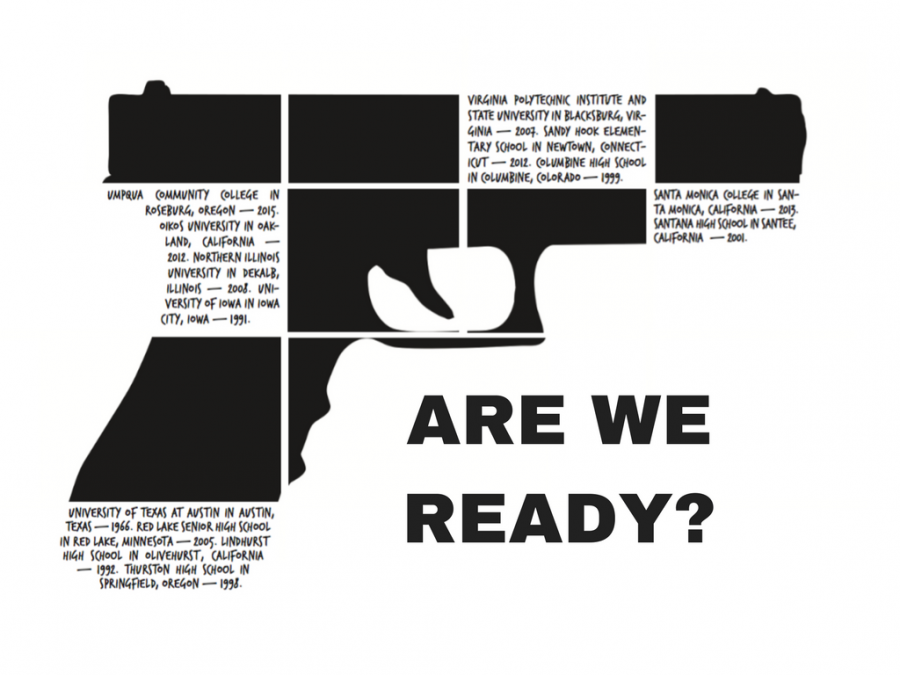


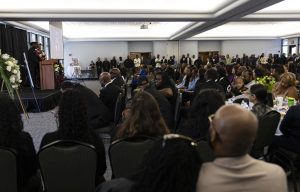
Robert Allan • Oct 31, 2017 at 7:35 am
These security measures the school is taking are merely security theater and will not protect students. In the event that we do get auto-locking doors, a shooter then just needs to choose the highest populated classroom to enter prior to shooting, and it will help the shooters cause. The only guaranteed way to stop an active shooter is to eliminate the threat by any means necessary. Unfortunately most schools ignorantly seem to think cowering and playing dead will somehow make the situation better.